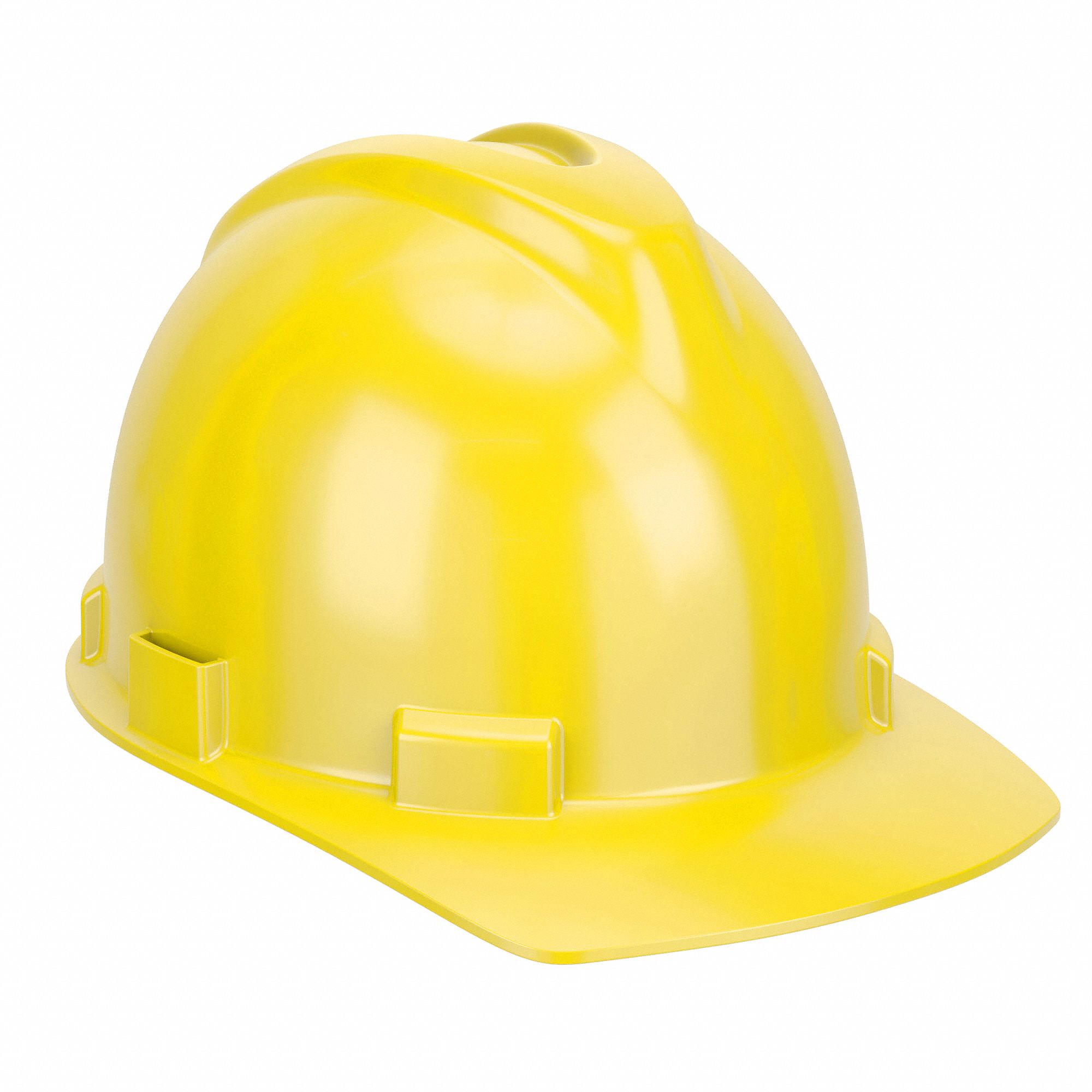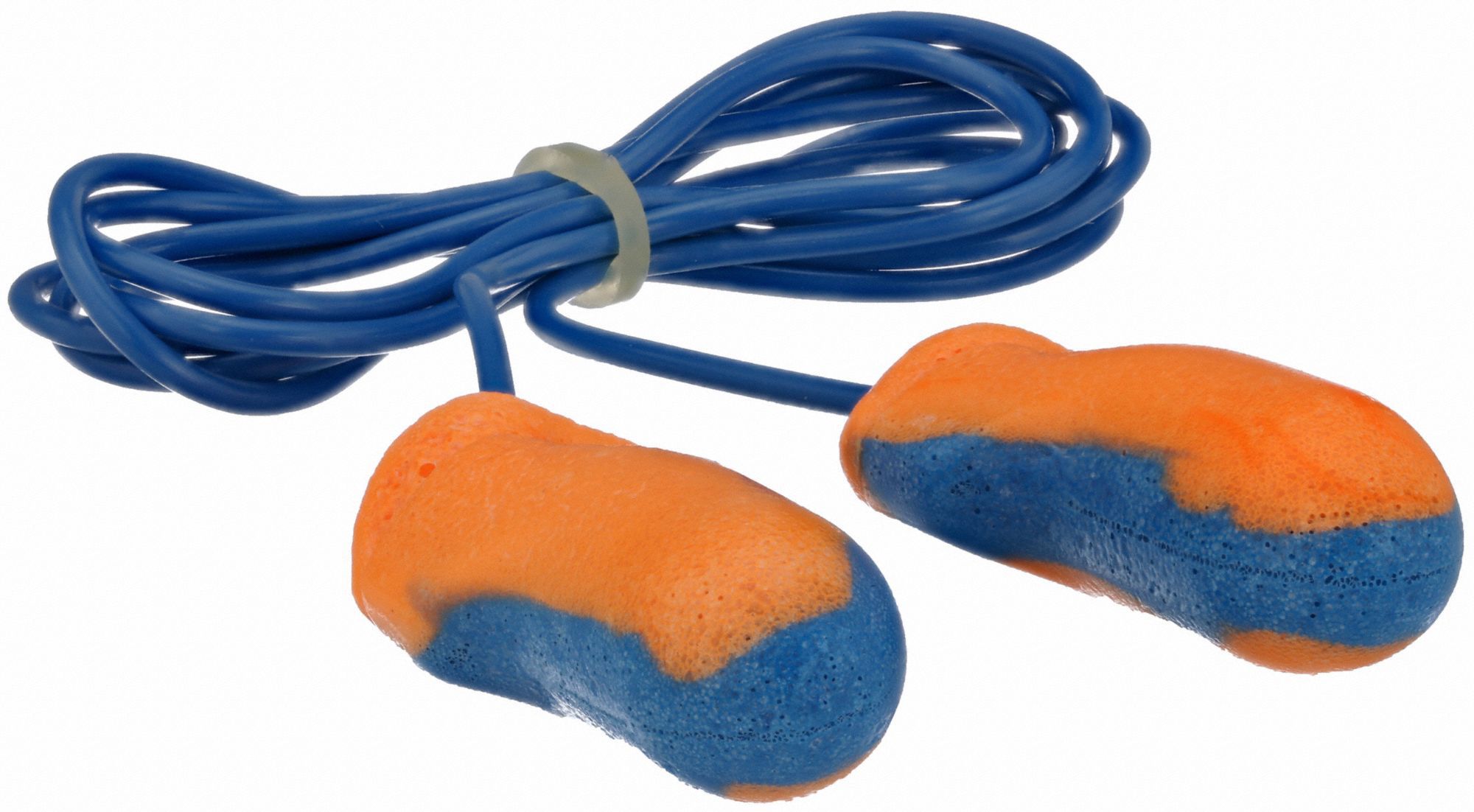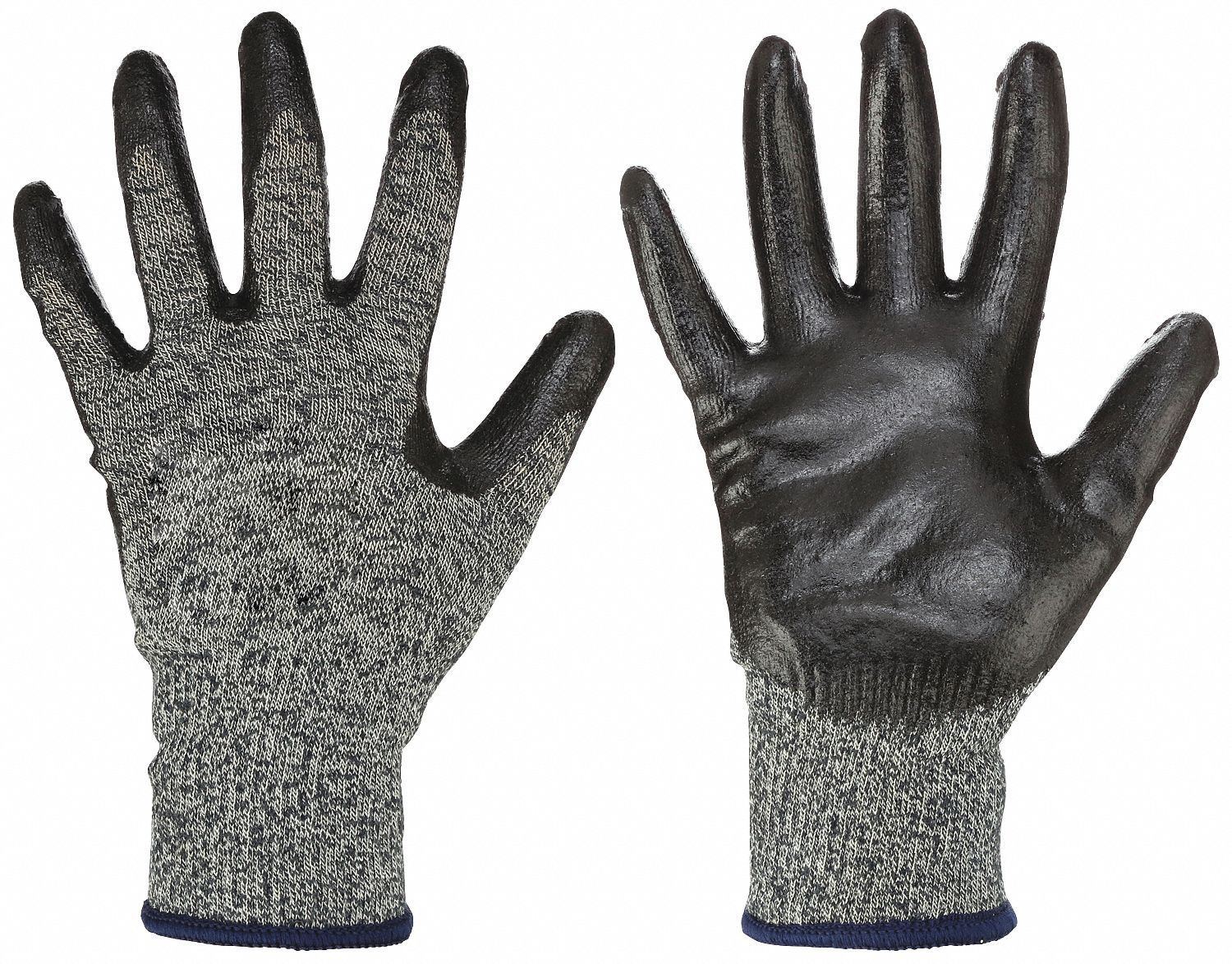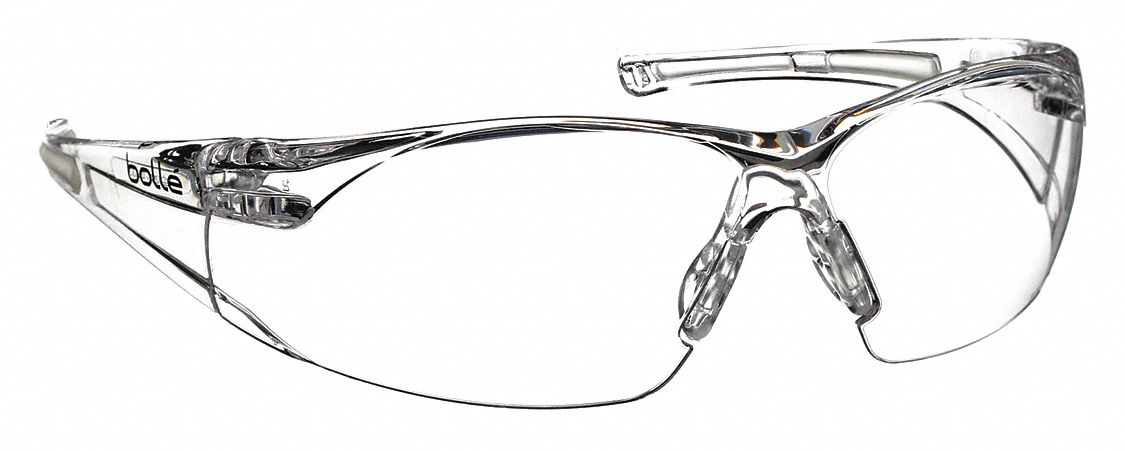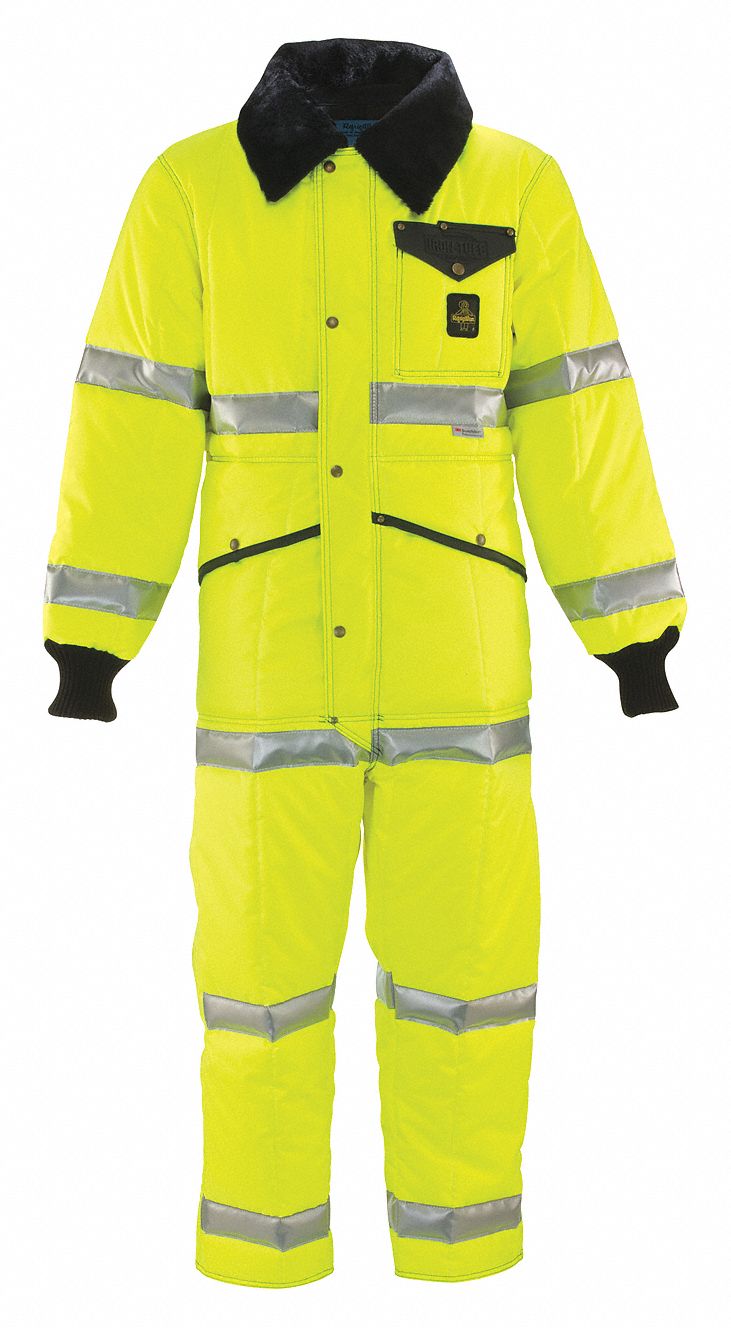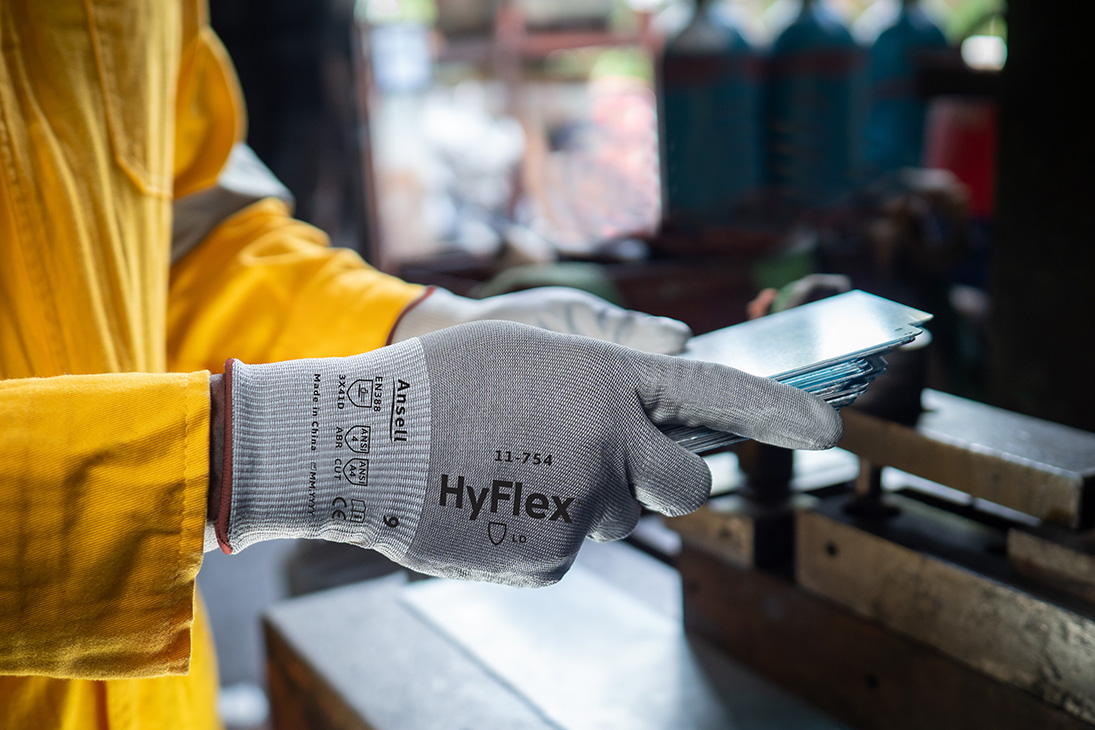

The Science of Cut-Resistant Gloves
By Grainger Editorial Staff 6/26/23
A glove only protects you while you’re wearing it. If it’s uncomfortable or it gets in the way of your work, you’ll probably take it off sooner than you should. And that leaves you with no hand protection at all.
That’s why cut-resistant glove manufacturers are almost as focused on comfort as they are on protectiveness. Paul Tierney is a senior director of New Product Development at Ansell. He explained the science and engineering that goes into an advanced cut-protective glove.
“It’s about getting the right level of cut protection,” Paul said. “But it’s also about making sure that the gloves are comfortable enough for people to wear for extended periods of time. That’s the challenge.”
Because of ongoing advances in materials science and engineering, today’s safety gloves can offer a better combination of comfort, flexibility and protection than ever before. But as the technologies become more sophisticated, there are more options to consider, and it can be harder to understand what the important distinctions are.
If you’re having trouble picking the right type of cut-protective gloves for your application, it can help to think about how the materials have evolved.
Evolution of Materials and Design
For a long time, safety gloves were made from a limited number of natural materials – cotton, leather or, for the most extreme cut hazards, steel chain mail. This changed in the early 1970s with the commercialization of Kevlar® fiber, the first synthetic material to join those time-tested options. Kevlar® belongs to a class of materials called para-aramids, which soon came to dominate the field because of their ability to offer high cut protection and some protection from contact heat at a relatively low weight.
In the 1990s, there was another important advance in cut-resistant materials with the development of high-performance polyethylene (HPPE) fibers. Dyneema® and Spectra® are two proprietary materials made with HPPEs. Compared to para-aramids, HPPEs can deliver similar cut protection at about half the weight. HPPEs also have cooling properties that make them more comfortable to wear. However, they can’t withstand high heat.
Today, most cut-resistant gloves still use either a para-aramid or an HPPE fiber – but that doesn’t mean that the technology has stagnated. Recently, there have been notable improvements in glove performance driven by yarn engineering rather than the introduction of entirely new materials.
“In the past 10 or 15 years, the number of engineered yarns has increased substantially,” said Paul. “Engineered yarns combine technical fibers with comfort fibers in super-lightweight materials.” For example, an engineered yarn might involve an eyelash-thin steel filament wrapped with another thread that’s more comfortable against the skin. Yarn engineering involves combining different fibers to create gloves with highly desirable characteristics that no single material can offer.
Another advantage of these ultra lightweight yarns is that they can be knitted at a higher gauge. This means that the yarn is knit together with more stitches per inch, creating a much lighter and more flexible material. “The higher the gauge, the more the glove feels like a second skin against the hand,” said Paul.
To see the difference that a high gauge can make, just find an old pair of Kevlar® food processing gloves in a seven-gauge knit and compare it to a contemporary glove in a 15- or 18-gauge knit. Because of the thicker yarn and the larger space between the stitches, the old-style gloves will be relatively bulky, less flexible and ultimately less comfortable to wear.
Just keep in mind that gauge isn't the only characteristic that influences comfort. "Knitting is certainly not the only factor. The type of yarn and the weight of the yarn come into play, too," said Paul. "Just because two different models are knit in the same gauge, that doesn't mean they have similar comfort levels. A 15-gauge para-aramid glove wouldn't be as comfortable as a 15-gauge HPPE glove, for example."
Functionality for the Future
As glove designers look to the future, they’re considering how they can improve performance in advanced manufacturing environments. Touch-screen functionality and electrostatic discharge (ESD) protection are two key futuristic features.
Touch screens are an increasingly common part of the industrial workplace. Ideally, workers would be able to operate screens without wasting time removing their gloves. But for a glove to work with touchscreens, it needs to be electrically conductive.
Today, manufacturers are providing touch screen functionality by using conductive cut-resistant fibers like steel and tungsten, by adding carbon to an engineered yarn for conductivity or by adding a conductive material to the glove coating.
Meanwhile, ESD protection is important because heavy manufacturing increasingly involves very sensitive electronics. "An electric car is essentially an iPad on wheels," said Paul. "As everything becomes electric, people will need cut-resistant gloves that can protect the components in the car, too." ESD-safe gloves are mostly used while handling and assembling electronic devices since static charges can destroy sensitive electronics parts.
Choosing the Right Pair
With so much engineering involved in different models of cut-resistant gloves, it can be challenging to select the type that’s best for your application. It’s not as simple as deciding whether para-aramid or HPPE is more suitable, because advanced yarns combine multiple materials to achieve a unique set of properties.
Instead of focusing on the materials first, start by thinking carefully about what you really need from the gloves using these three questions:
Question 1: What are the cut hazards involved in the work, and what level of cut protectiveness is appropriate to them?
In the U.S., cut-resistant gloves are tested according to a procedure established by ANSI/ISEA standards. A machine moves a blade across a sample of the glove’s palm material, increasing the force behind the blade until it cuts through the material. Gloves receive cut-level ratings based on that amount of force, from A1, which offers very little protection against cuts, to A9, which offers the most.
So how much cut protection do you need? Here are some general guidelines:
- Light cut levels (ANSI A2 through A3) protect against cuts while doing work like handling cardboard, light raw materials and plastic.
- Medium cut levels (ANSI A4 through A5) protect against cuts while doing work like automotive assembly and mining tasks, handling sharp-edged ductwork and dealing with recycling materials.
- Heavy cut levels (ANSI A6 through A7) protect against cuts while doing work like handling slitter blades, steel cable and stamped metal.
- Extreme cut levels (ANSI A8 through A9) protect against cuts while doing work like handling sheet metal, steel cable and heavy plate glass.
Question 2: What are the secondary hazards involved in the work?
Many cut-resistant glove models offer protection against additional hazards. Manufacturers and suppliers can provide information about certification for hazards including:
- Impact
- Puncture
- Tear
- Abrasion
- Cold
- Heat
- Chemical
Questions 3: Are there any additional features that can help people do their work more effectively?
This is where touch-screen functionality and ESD come into play. Another useful feature to consider is the type of grip coating. Many cut-resistant gloves have coatings to improve grip, and the different coating materials and patterns perform differently, especially in oily or wet environments.
Getting Help
Finally, it’s important to remember that you can get help. In addition to offering detailed testing data, many manufacturers offer customized on-site consultations that help employers identify hazards and determine which PPE can provide the right level of protection. Ansell Guardian is one such service. “We’ve been performing safety assessments for our customers for over 45 years, so we can come in and quickly show you how we can help reduce injuries, reduce cost and drive compliance,” said Paul.
DuPont™ and Kevlar® are trademarks or registered trademarks of affiliates of DuPont de Nemours, Inc.
The information contained in this article is intended for general information purposes only and is based on information available as of the initial date of publication. No representation is made that the information or references are complete or remain current. This article is not a substitute for review of current applicable government regulations, industry standards, or other standards specific to your business and/or activities and should not be construed as legal advice or opinion. Readers with specific questions should refer to the applicable standards or consult with an attorney.

